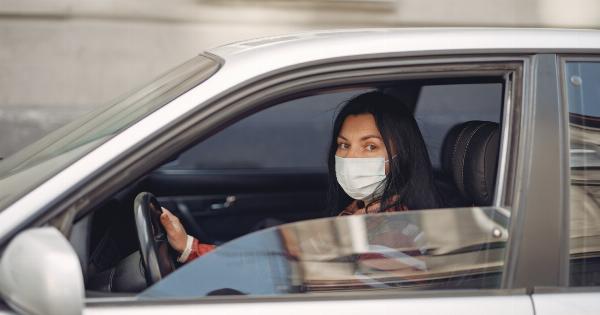Do you feel queasy, dizzy, or nauseous when you’re riding in a car or other vehicle? You might be experiencing motion sickness. This condition is common, affecting up to one-third of adults and children.
It can make car rides unbearable and cause you to feel sick for hours afterward. In this article, we’ll explore the causes of motion sickness, how to prevent it, and what you can do to feel better if you’re already experiencing symptoms.
What Is Motion Sickness?
Motion sickness is a condition that occurs when there is a conflict between the visual and vestibular systems in the body.
The visual system is responsible for interpreting what we see, while the vestibular system in the inner ear senses motion and position. When there is a mismatch between what the eyes see and what the inner ear senses, the brain receives conflicting information and can’t make sense of it. This confusion leads to symptoms such as nausea, dizziness, and vomiting.
What Causes Motion Sickness?
There are several theories about why motion sickness occurs. One idea is that it’s an evolutionary response to perceived poisoning.
When humans ate something that made them sick, they would often become dizzy and nauseous before vomiting, which would help rid their body of the toxin. Another theory is that it’s a side effect of the development of transportation. Our bodies are not designed to handle the speeds and movements of cars, planes, and trains, so we experience symptoms of motion sickness as a result.
Whatever the cause, there are certain situations that are more likely to trigger motion sickness. These include:.
- Riding in a car, especially if you’re in the back seat or facing backwards
- Taking a boat or ship, especially in rough waters
- Flying in a plane, especially during turbulence
- Riding on an amusement park ride or roller coaster
What Are the Symptoms of Motion Sickness?
Motion sickness can cause a variety of symptoms, including:.
- Nausea or vomiting
- Dizziness or vertigo
- Headache
- Sweating
- Pale skin
- Rapid breathing
- Inability to concentrate
Symptoms can range from mild to severe and can last for hours, even after the motion has stopped.
How Can You Prevent Motion Sickness?
There are several strategies you can use to prevent motion sickness, including:.
1. Fix Your Gaze
One of the best ways to prevent motion sickness is to fix your gaze on a stable object. For example, if you’re in a car, look straight ahead at the road. If you’re on a boat, focus on the horizon.
This will help your eyes and vestibular system communicate more effectively and reduce the chance of motion sickness.
2. Take Medication
There are several medication options available to help prevent motion sickness. Antihistamines like dimenhydrinate (Dramamine) and meclizine (Antivert) can be effective, as can scopolamine patches.
Talk to your doctor about which medication might be best for you.
3. Eat Lightly
Eating a heavy meal or drinking alcohol before a trip can increase your risk of motion sickness. Instead, eat light foods like crackers or dry toast and drink plenty of water or clear fluids.
4. Sit in the Right Seat
If you’re in a car, sitting in the front seat can help reduce the risk of motion sickness. If you’re in a boat, sit in the middle, where the movement is less extreme.
5. Get Fresh Air
Being in a stuffy, enclosed space can make motion sickness worse. If possible, open a window or door to let in fresh air.
What Can You Do If You’re Already Experiencing Symptoms?
If you’re already experiencing symptoms of motion sickness, there are several things you can do to feel better:.
1. Close Your Eyes
Closing your eyes can help reduce the visual input that’s confusing your brain and reduce symptoms of nausea and dizziness.
2. Focus on Your Breathing
Concentrating on slow, deep breathing can help reduce symptoms of motion sickness and calm your body.
3. Use Acupressure
Some people find that acupressure can help relieve symptoms of motion sickness. There are several pressure points on the body that are thought to be effective for this purpose, including the inside of the wrist and the base of the neck.
4. Try Ginger
Ginger has been shown to be effective in reducing symptoms of nausea and vomiting. You can try drinking ginger tea or taking a ginger supplement.
5. Rest
Often, rest is the best thing you can do to help your body recover from motion sickness. Lie down in a comfortable place and wait until you feel better.
Conclusion
Motion sickness can be a frustrating and uncomfortable experience, but there are strategies you can use to prevent it and ways to relieve symptoms if you’re already experiencing them.
Try some of the tips we’ve suggested and see what works best for you.




























